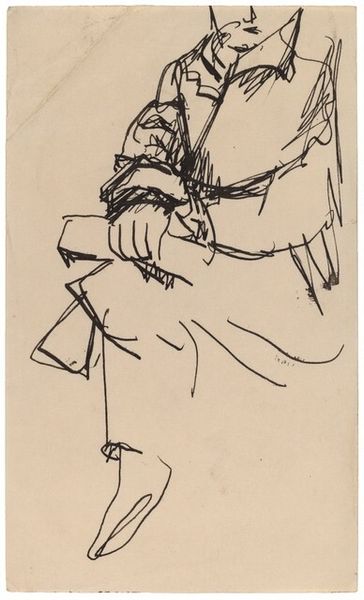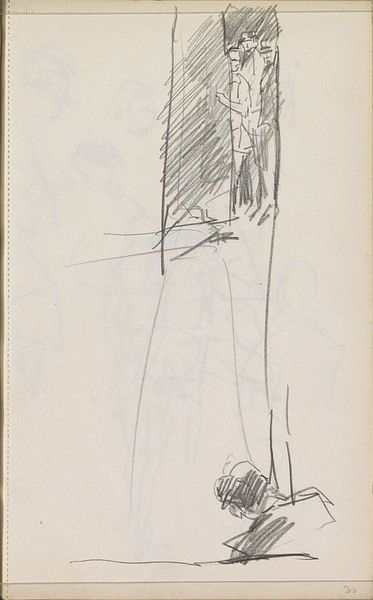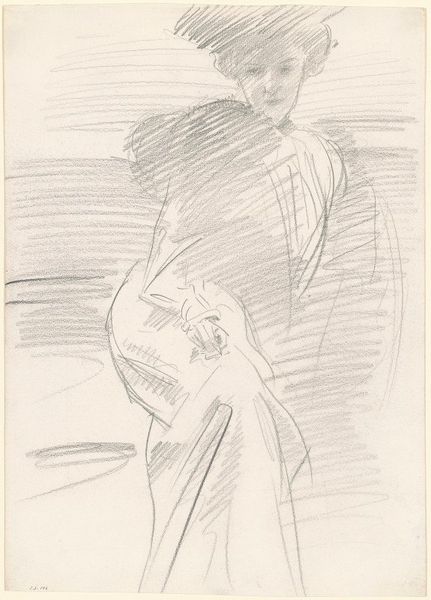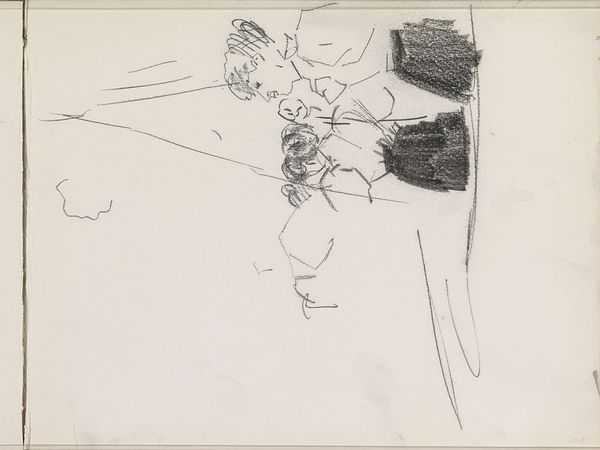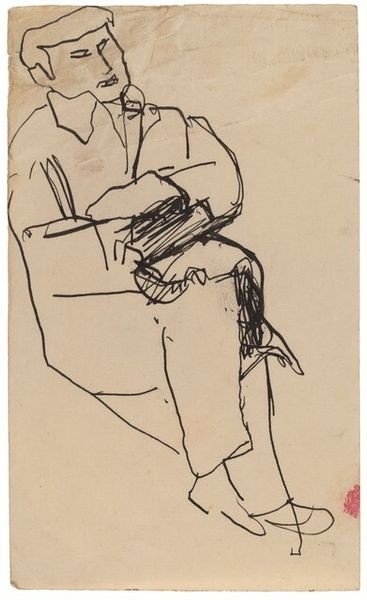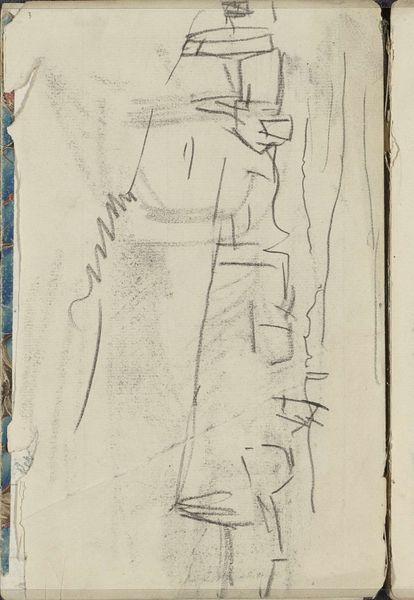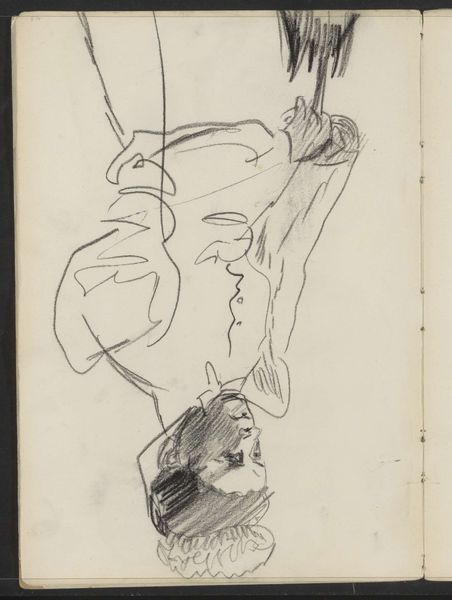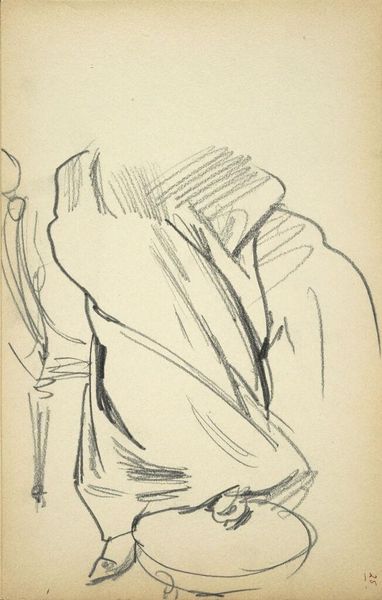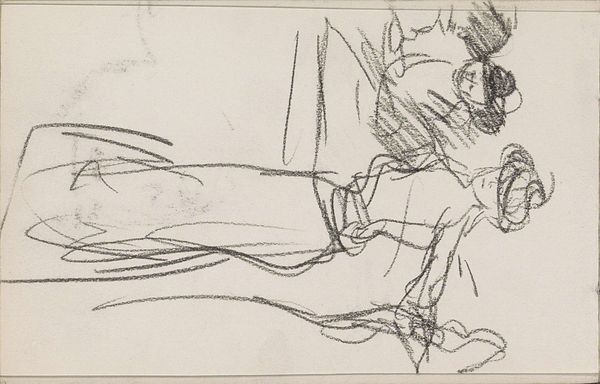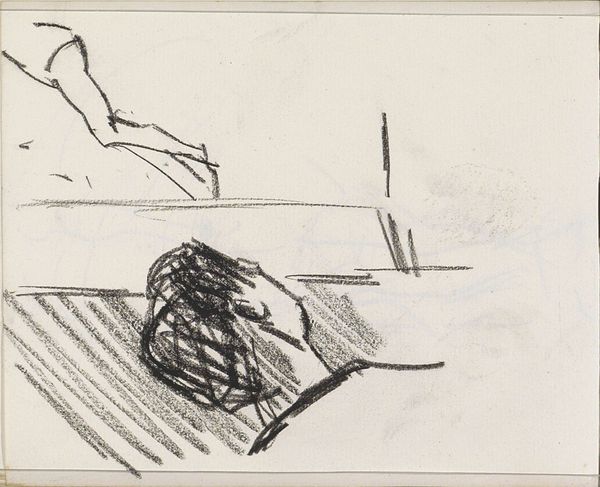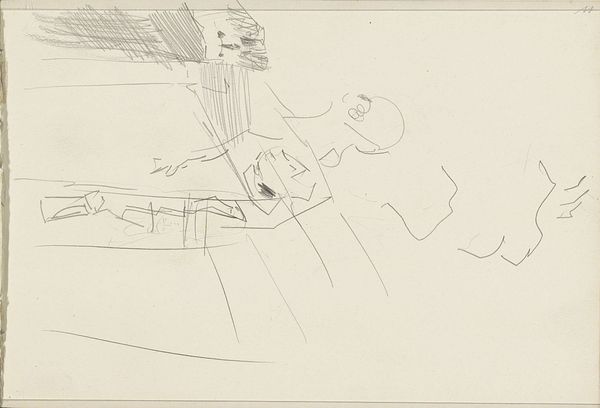
Copyright: Rijks Museum: Open Domain
Editor: This drawing, "Standing Woman with Hat" by Isaac Israels, dated between 1875 and 1934 and rendered in pencil, strikes me with its simplicity and the visible, almost hurried, strokes. It feels like a quick study rather than a finished piece. What can you tell me about this work? Curator: It's fascinating to consider this drawing through a materialist lens. Look at the rough handling of the pencil, the unblended strokes creating the shadow—the immediate physicality of its production is so evident. Rather than a window into the soul, as a traditional art historian might argue, it becomes an index of labor, of Israels’ quick and assured movements across the paper. How might this method of rapid production reflect broader changes in artistic patronage and consumption during this period? Editor: That's a great point! It feels almost mass-producible, although obviously each sketch would be unique. Did Israels’ economic situation influence his technique? Curator: It is quite likely! Consider the context of Impressionism itself. It emerges alongside industrialization and a burgeoning market for art among the middle class. Artists had to become faster, more efficient, even embrace new cheaper materials. We see Israels here opting for pencil on paper rather than oil on canvas, reflecting constraints or maybe even opportunities. Do you think that this shift also changed the value we placed on "high art" compared to, say, more craft-based art practices? Editor: I hadn’t considered that! So, his choice of materials wasn't just an aesthetic decision; it’s bound up with production, consumption, and even the status of art itself? Curator: Precisely! It is a confluence of choices reflecting material conditions. Editor: I am beginning to see so much more. This makes me think about art in a completely different way! Curator: Glad to shed a different light on this artwork!
Comments
No comments
Be the first to comment and join the conversation on the ultimate creative platform.
